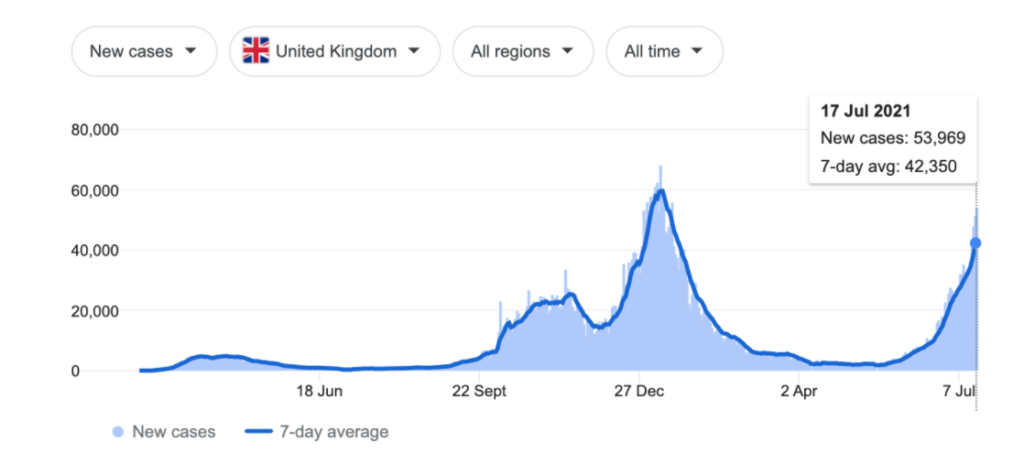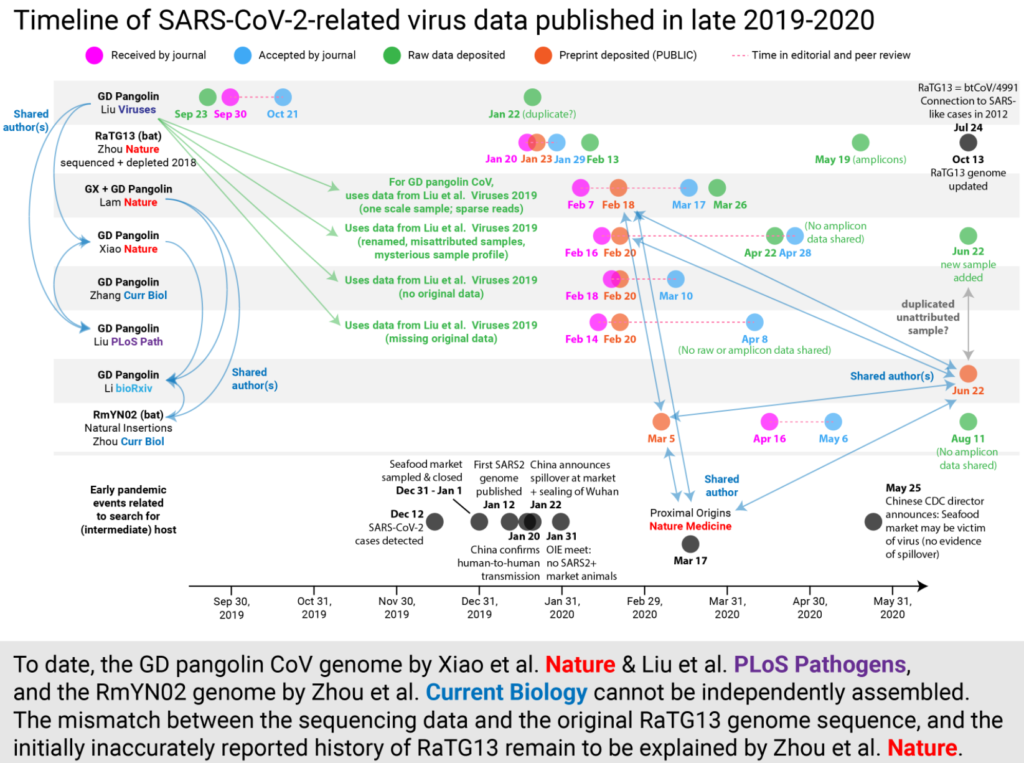Graphic:

Excerpt:
On Monday, July 19, the country is ditching all of its remaining pandemic-related restrictions. People will be able to go to nightclubs, or gather in groups as large as they like. They will not be legally compelled to wear masks at all, and can stop social distancing. The government, with an eye on media coverage, has dubbed it “Freedom Day,” and said the lifting of safety measures will be irreversible.
At the same time, coronavirus cases are rapidly rising in the UK. It recorded over 50,000 new cases on Friday, and its health minister says that the daily figure of new infections could climb to over 100,000 over the summer.
…..
The UK’s vaccination program is still under way, but it has been broadly successful so far. In all, 68% of the adult population is fully vaccinated, and about 88% of adults have received their first dose (this includes the 68% who have had both doses). Just 6% of Brits are hesitant about getting a shot, according to the Office for National Statistics.
…..
But the government seems to be betting that not all numbers are equally scary. It hopes that hospitalizations will stay low enough to stop the National Health Service from being completely overwhelmed. It is making the assumption that the link between cases and hospitalization rates has been weakened, if not broken.
“This wave is very different to previous ones,” says Oliver Geffen Obregon, an epidemiologist based in the UK, who has worked with the World Health Organization. “The proportion of hospitalization is way lower compared to similar points on the epidemic curve before the vaccination program.”
Author(s): Charlotte Jee
Publication Date: 18 July 2021
Publication Site: MIT Tech Review

